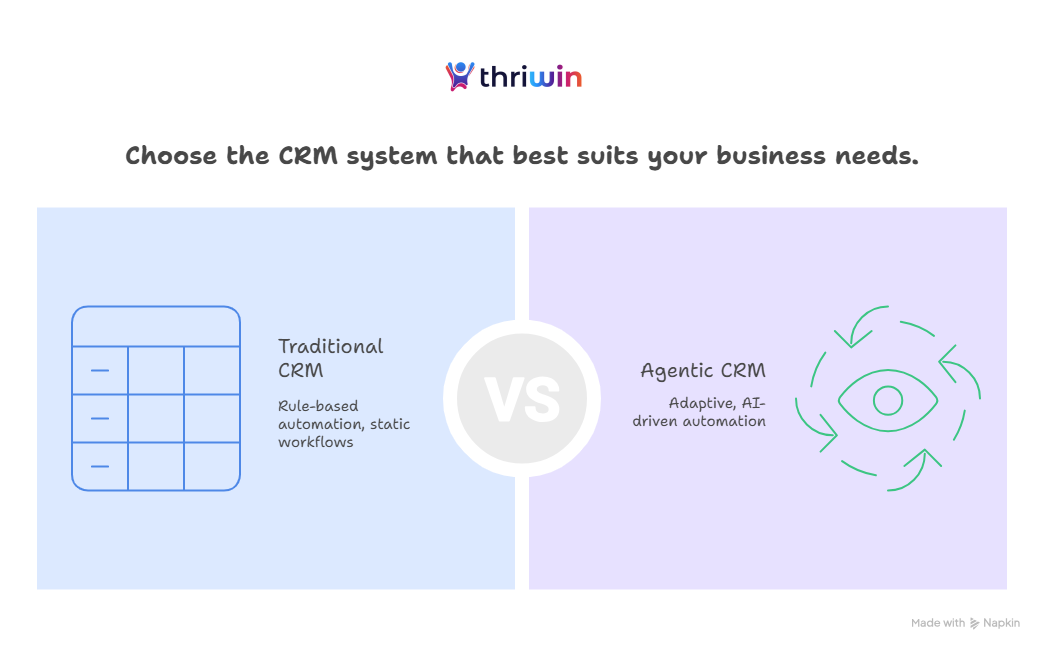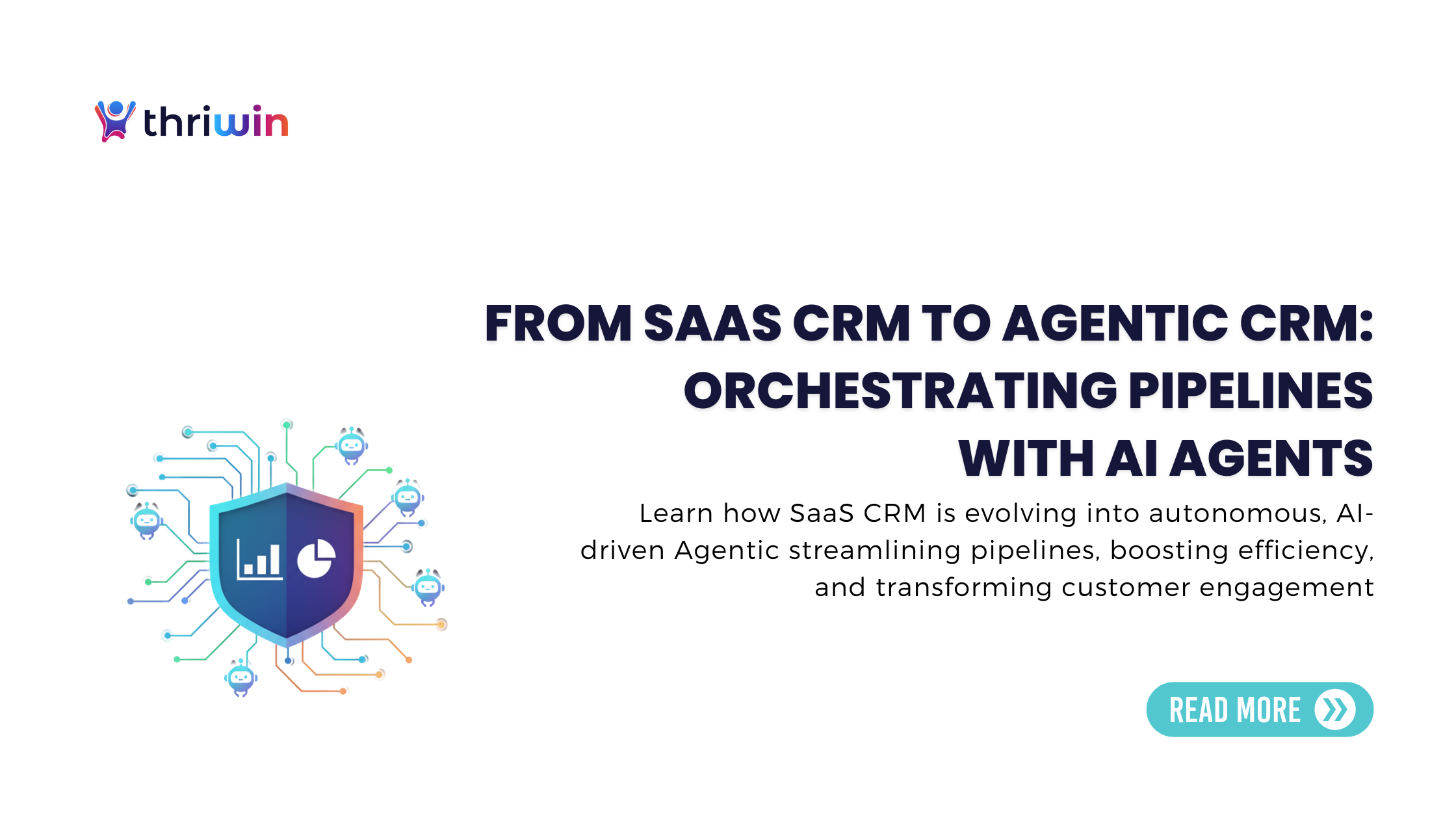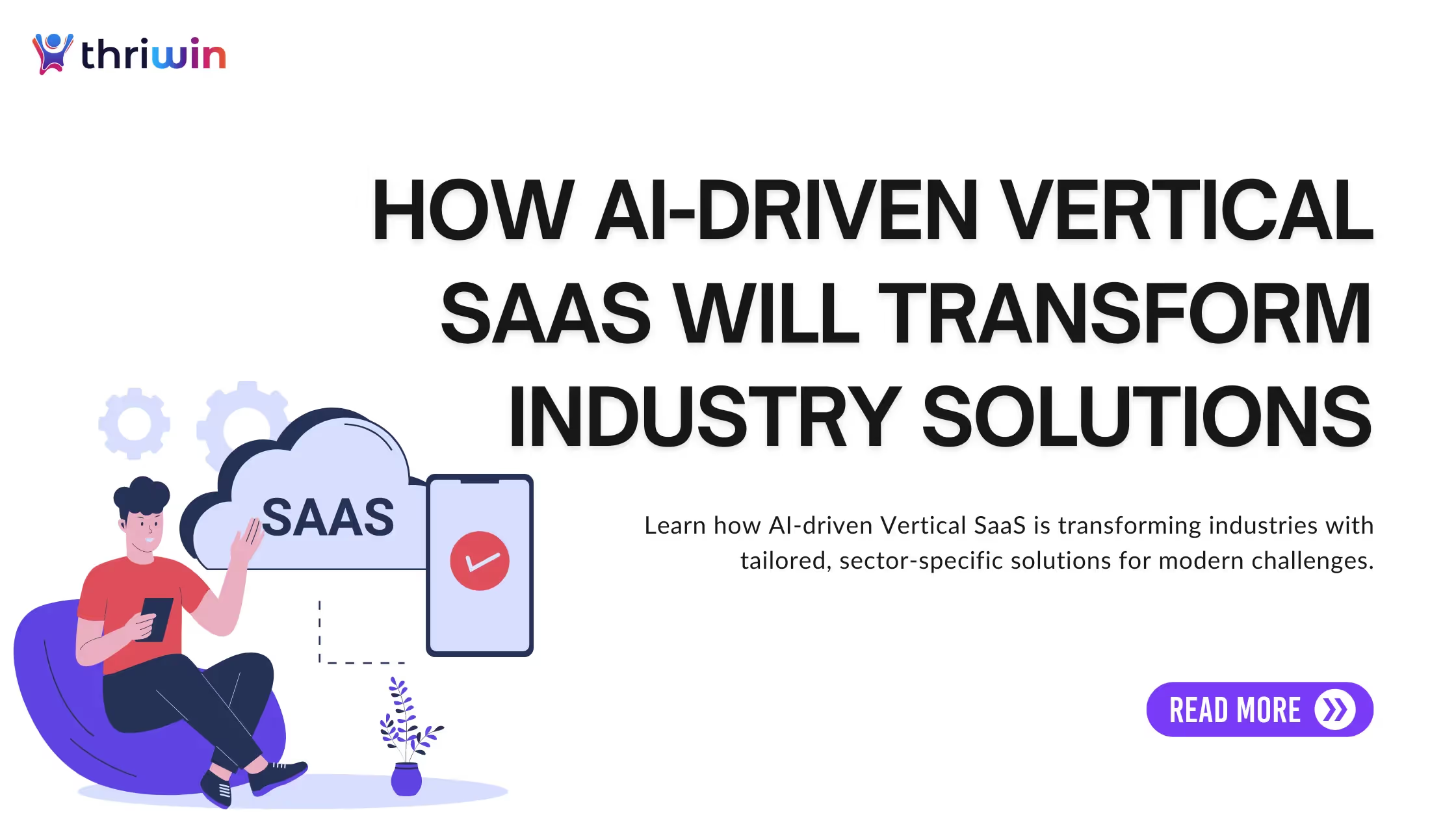Most professionals already know what SaaS CRM is-it has been the default system for managing customer relationships for over a decade. The bigger story today is how SaaS CRM software is evolving into something far more autonomous: Agentic CRM. According to Salesforce’s recent coverage of AI agents, the industry is moving toward systems that not only store and track interactions but also act, plan, and optimize pipelines with minimal human input. Freshworks’ announcements on agentic AI also highlight how vendors are racing to embed proactive automation into core CRM functions.
Limitations of Traditional SaaS CRM
While SaaS CRM has transformed how organizations manage customer relationships, cracks in the model have become apparent as customer expectations, data volumes, and automation needs have scaled. Sales and marketing leaders often find themselves questioning whether their CRM is a strategic growth engine or merely a digital filing cabinet. These limitations set the stage for why Agentic CRM is gaining momentum.
Manual Burden and Reactive Nature of SaaS CRM
Despite its success, SaaS CRM is still heavily dependent on human input. Reps must log calls, update deal stages, and trigger workflows manually, which not only slows down teams but also introduces the risk of incomplete or inconsistent data entry. Research by Gartner shows that sales representatives often spend more than 25% of their time on administrative CRM tasks, rather than selling.
Reactive vs. Predictive Workflows
Traditional SaaS CRM also tends to be reactive, capturing what already happened rather than predicting what should happen next. This lag results in missed opportunities, slower deal cycles, and limited insight into customer behavior. Without built-in intelligence, businesses are left playing catch-up instead of staying ahead of customer needs.
The Resulting Gaps
Over time, these constraints create friction, adoption challenges, and a widening gap between data collection and meaningful action. Companies may have rich CRM databases but struggle to translate them into real-time decisions and proactive engagement strategies.
Introducing Agentic CRM: The Next Frontier
Agentic CRM represents the evolution of SaaS CRM, powered by autonomous AI agents. Instead of waiting for reps to input data, agentic systems proactively orchestrate pipelines. These AI agents act with autonomy, driven by goals such as increasing conversion rates or shortening sales cycles. They integrate across tools, interpret context, and adapt strategies without requiring constant user interface interaction. In essence, Agentic CRM transforms CRM from a system of record into a system of action.
Real-World Shift Toward Agentic CRM
For example, Salesforce Agentforce is already embedding agentic capabilities into workflows, enabling sales reps to focus on high-value strategy while the system manages follow-ups and task orchestration. Similarly, Freshworks Copilot automates repetitive customer support tasks, ensuring faster resolutions and better scalability.
Why It’s Different from Traditional Automation
Unlike rule-based automation in legacy CRM systems, Agentic CRM doesn’t just execute pre-set triggers. It adapts in real time, learning from past interactions and external data sources. For instance, if a prospect’s buying signals change, the agent can automatically adjust the engagement strategy-something static workflows can’t achieve.
Industry Momentum
Industry analysts, such as Forrester, predict that agentic platforms will become central to enterprise technology stacks, with adoption accelerating as companies seek proactive and predictive systems rather than reactive ones.
Agentic CRM represents the evolution of SaaS CRM, powered by autonomous AI agents. Instead of waiting for reps to input data, agentic systems proactively orchestrate pipelines. These AI agents act with autonomy, driven by goals such as increasing conversion rates or shortening sales cycles. They integrate across tools, interpret context, and adapt strategies without requiring constant user interface interaction. In essence, Agentic CRM transforms CRM from a system of record into a system of action.

How Agentic CRM Operates: Orchestrating Pipelines Autonomously
Agentic CRM operates through a mesh of intelligent agents that plan, remember, and execute tasks. These aren’t just static bots-they are adaptive systems that continuously learn and refine their approach. Key mechanisms include:
- Planning: AI agents break down objectives (e.g., “close deal by end of quarter”) into actionable steps. For example, if a deal is stuck at the proposal stage, the system might automatically schedule a reminder or generate a personalized offer.
- Memory: Systems retain context from past interactions to inform future decisions. This could include remembering prior customer objections or tracking historical buying signals, allowing for more tailored engagement.
- Integration: Agents connect with email, chat, ERP, and marketing platforms to ensure seamless execution. This multi-channel orchestration means that a follow-up email, calendar invite, and Slack notification can all occur automatically, aligned with a single goal.
- Autonomous Execution: Instead of waiting for responses, agents trigger next steps, follow up with leads, or escalate tasks based on specific conditions. For instance, if a high-value lead goes silent, the agent can nudge the prospect with new content or alert a manager for intervention.
Industry observers, such as Harvard Business Review, note that such orchestration enables CRMs to evolve into active participants in sales strategy, rather than passive repositories. This orchestration enables self-managing pipelines, where outcomes are continuously optimized.

Benefits & Workflow Impacts
Organizations adopting Agentic CRM report transformative gains across multiple dimensions. These benefits are not just theoretical-they are being observed in live deployments today.
- Efficiency: Automated orchestration can improve operations by up to 90%. For example, McKinsey research highlights that companies adopting AI-driven sales automation significantly reduce deal cycle times (McKinsey Insights).
- Customer Satisfaction: Personalized, proactive engagement drives a 75% satisfaction boost. An AI agent, for instance, can recognize when a customer is at risk of churn and trigger a tailored retention campaign instantly.
- Revenue Growth: Faster response times and optimized funnels improve conversion metrics across the pipeline. Salesforce has reported early customer cases where agentic workflows increased pipeline velocity by double digits.
- Employee Productivity: Reps spend more time on strategy and relationship-building instead of repetitive data entry. By offloading admin work, agentic systems allow employees to focus on empathy-driven selling and creative problem-solving.
Cultural and Strategic Shifts
Beyond numbers, Agentic CRM fosters a more profound cultural shift: sales and marketing teams stop treating CRM as a database and start leveraging it as a decision partner that works alongside them. This reframing transforms the CRM into an active advisor that anticipates needs, recommends actions, and guides strategic choices rather than passively storing records.
Implementation Challenges
Adopting Agentic CRM is not just a technical project-it involves organizational, financial, and cultural hurdles that must be addressed for success.
While promising, Agentic CRM adoption presents challenges that leaders must navigate carefully:
- Decision Fatigue: Too many automated suggestions can overwhelm users if not prioritized or filtered. For example, if every agent recommends a follow-up, managers may struggle to determine which actions are most important. Companies like HubSpot note that balancing automation with human oversight is key to avoiding burnout.
- ROI Uncertainty: Proving tangible returns from autonomous agents remains a significant challenge, especially during early adoption. Organizations often face pressure to justify the upfront investment in AI capabilities before seeing pipeline acceleration. A Deloitte study highlights that many enterprises underestimate the time required to measure ROI in AI-driven initiatives.
.
- Pricing Complexity: Per-agent pricing models introduce uncertainty in scaling. Should an organization pay for each AI agent individually, or bundle them into broader platform fees? Misalignment here can slow adoption, as leaders struggle to forecast long-term costs.
- Governance: Ensuring responsible AI decision-making and compliance is essential for trust. Issues such as data privacy, algorithmic bias, and regulatory compliance (e.g., GDPR) must be addressed. Forrester analysts emphasize the importance of transparent governance frameworks in maintaining user confidence.
These challenges show that while Agentic CRM unlocks efficiency and growth, successful implementation depends on striking the right balance between automation, transparency, and measurable value.
Get Started with Agentic CRM at Thriwin
Thriwin is positioning itself as a pioneer in the Agentic CRM era, offering tools and strategies that go beyond automation to enable actual AI-driven orchestration. Their platform emphasizes pipeline acceleration, predictive insights, and seamless integrations with existing SaaS ecosystems. In addition to technology, Thriwin provides governance frameworks and ROI-driven adoption roadmaps, helping businesses navigate the transition with confidence.
Suppose your organization is exploring ways to reduce manual CRM tasks, boost sales efficiency, and future-proof customer engagement strategies. In that case, Thriwin provides practical guidance and solutions tailored for this new wave of CRM evolution.
Agentic CRM is more than a vision-it’s becoming a competitive advantage. If you’re ready to explore how these systems can transform your pipeline management and customer engagement, check out Thriwin. Their platform and insights help organizations adopt agentic workflows with clarity, measurable ROI, and governance best practices.
FAQs
1. What is the difference between SaaS CRM and Agentic CRM?
SaaS CRM offers cloud-based tools for managing customer data but relies heavily on manual input. Agentic CRM introduces AI agents that act autonomously, learning and adapting to manage workflows with minimal human effort.
2. How does Agentic CRM improve sales efficiency?
It automates tasks like logging calls, sending follow-ups, and analyzing data. This frees reps to focus on relationships and closing deals, boosting efficiency by up to 90%.
3. Which companies are leading the shift toward Agentic CRM?
Salesforce (Agentforce), Freshworks (Copilot), and Microsoft (Copilot integrations) are pioneering platforms embedding agentic capabilities into CRM.
4. What challenges do businesses face when adopting Agentic CRM?
Key hurdles include decision fatigue, uncertainty regarding ROI, pricing complexity, and governance concerns such as compliance and data privacy.
5. How can organizations get started with Agentic CRM?
Begin with pilots in areas like lead nurturing or customer support. Platforms like Thriwin offer guidance, integrations, and ROI frameworks to help scale responsibly.
%201.svg)






